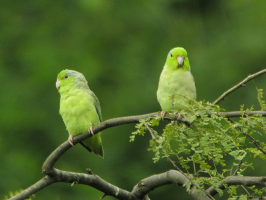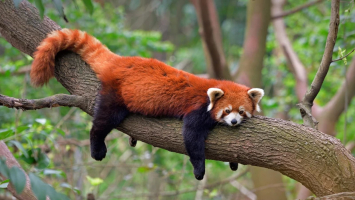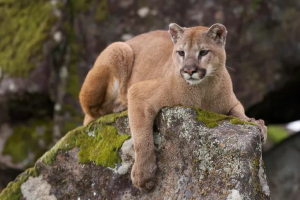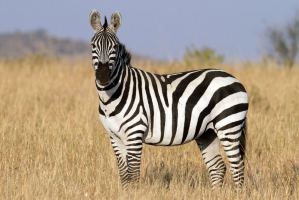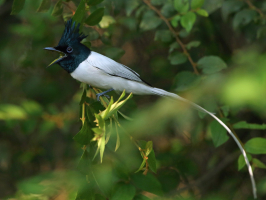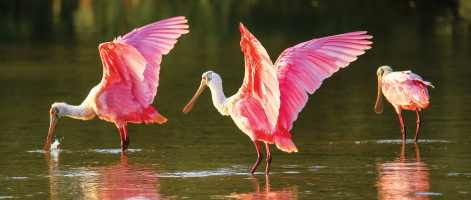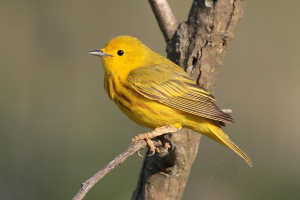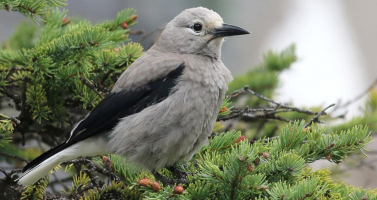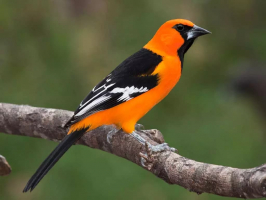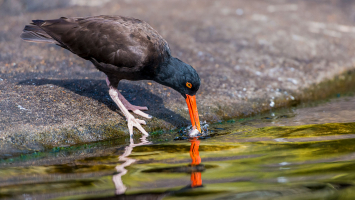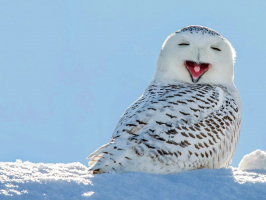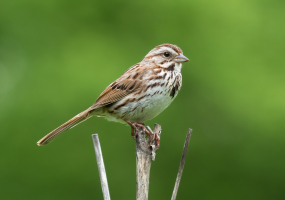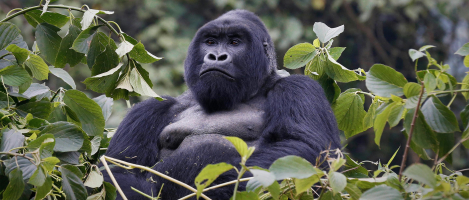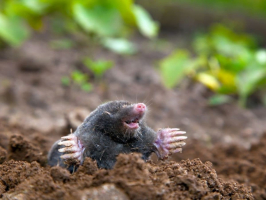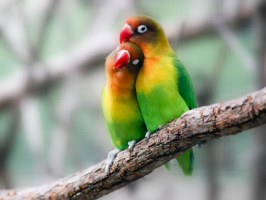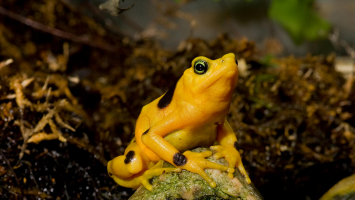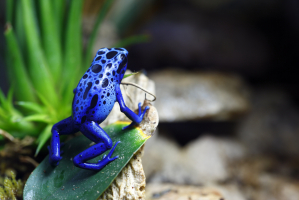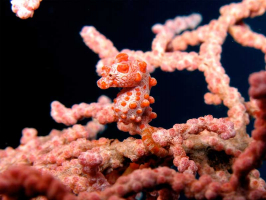Top 10 World's Beautiful Green Animals
Green is the color of nature and peace. Although this color isn’t such an unusual color in the animal world, beautiful green animals are a bit rare and exotic. ... read more...They use their coloration to blend in with their surroundings due to hiding from predators or their prey, which allows them to survive more easily in the wild. Fortunately, there are enough beautiful green animals to fill this list. Below are the most beautiful green animals in the world, let's find out!
-
The Emerald Tree Boa (corallus caninus) is a non-venomous boa species found in the rainforests of South America. Corallus batesii has been separated from C. caninus as a species since 2009. Henry Walter Bates, an English naturalist, and adventurer remembered by the specific or subspecific term, batesii, for whom Batesian mimicry is also named. The length of an adult is roughly 6 feet (1.8 meters). They have front teeth that are proportionately larger than those of any other non-venomous snake and are highly developed.
The common color pattern is an emerald green background color with so-called "lightning bolts" or an uneven white zigzag stripe along the back and a yellow belly. The vivid coloring and markings make South American snakes easily identifiable. Before ontogenetic coloring takes place and the animals change to emerald green (after 9–12 months of age), juveniles range in hue from different tones of light and dark orange to brick-red. The green tree python (Morelia Viridis), a type of snake whose hatchlings and young can also be canary yellow or brick-red, exhibits the same behavior. Contrary to common perception, emerald tree boas do not have juveniles that are yellow like green tree pythons do. Eventually, as they age, their true emerald color sets in, usually by the time they are around a year old. The snake’s eyes are a similar greenish-yellow shade with typical thin, slit-shaped pupils.
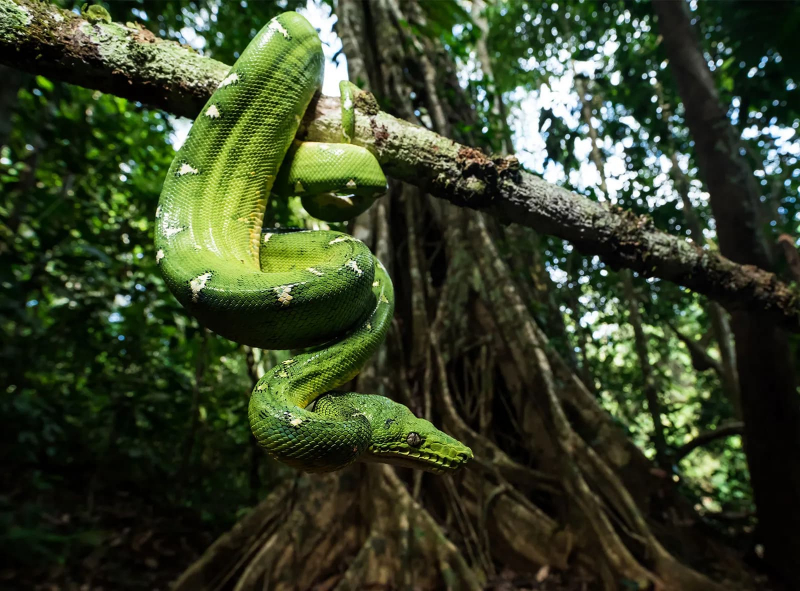
Wikimedia Commons 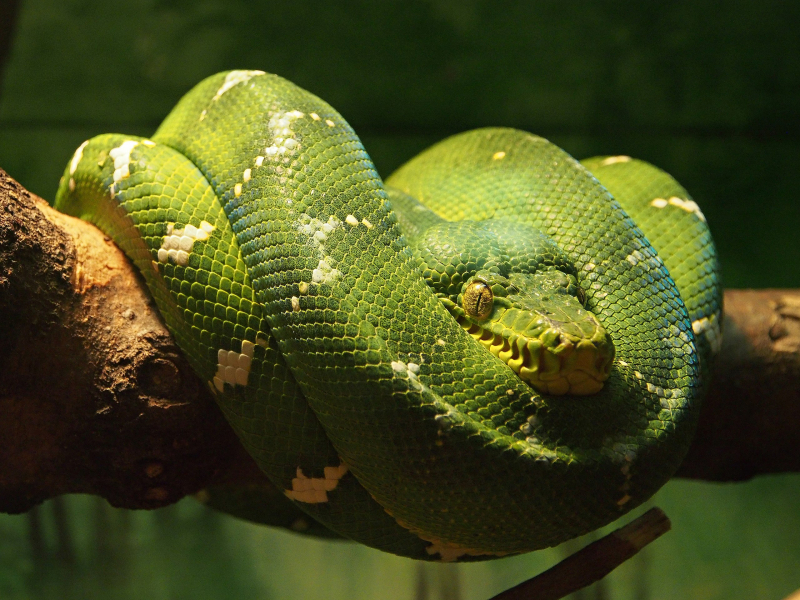
Encyclopedia Britannica -
Agalychnis callidryas, better known as the Red-Eyed Tree Frog, is an arboreal hylid native to Neotropical rainforests where it ranges from Mexico, through Central America, to Colombia. The majority of the time, adult red-eyed tree frogs eat carnivorous insects like flies, grasshoppers, crickets, and moths. They occasionally consume smaller amphibians. Tadpoles eat bacteria, lipids, algae, plankton, and carrion. Froglets start eating tiny insects like fruit flies and pinhead crickets after they undergo metamorphosis.
The eyes of this species are big, vivid red, and have vertically narrowed pupils. With a vivid green body, vertical yellow and blue stripes down its side, a white bottom, vibrant red or orange feet, and red eyes, the red-eyed tree frog is incredibly colorful. They can cling to leaves thanks to the adhesive pads on their toes as well. The belly of the red-eyed treefrog has thin, delicate skin, while the back has thicker, coarser skin. The ladies are slightly larger at around 3 inches, while the boys are typically about two inches long.
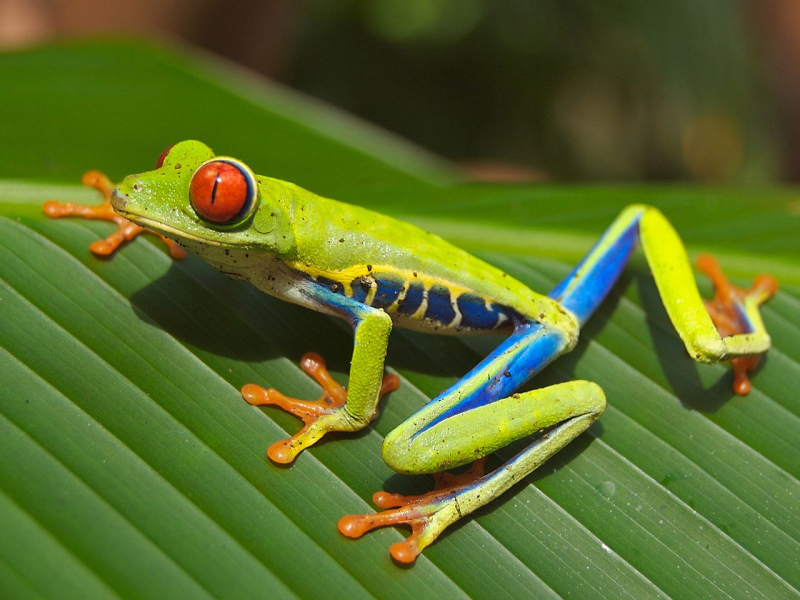
Wikipedia 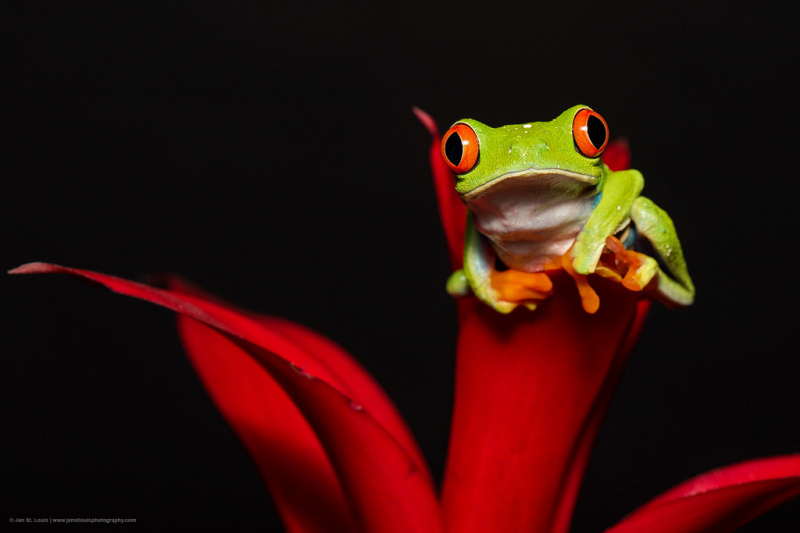
Flickr -
The Luna Moth (Actias luna) also known as the American moon moth is a Nearctic moth in the family Saturniidae, subfamily Saturniinae, a group commonly known as giant silk moths. It has a white body and wings that are lime green in color. Additionally green are the caterpillars' larvae. One of the bigger moths in North America, it typically has a wingspan of about 114 mm, but it can reach 178 mm. In Canada, there is only one generation annually, with the winged adults first showing in late May or early June. In the southern United States, however, there are two or possibly three generations annually, with the first appearance occurring as early as March.
As defense mechanisms, larvae emit clicks as a warning and can also regurgitate intestinal contents, confirmed as having a deterrent effect on a variety of predators. It is believed that the extended tails of the hindwings mislead predatory bats' echolocation detection. Luna moths and other native moths appear to have been negatively impacted by a parasite fly that was purposefully brought to North America to function as a biological control for the invasive spongy moth.
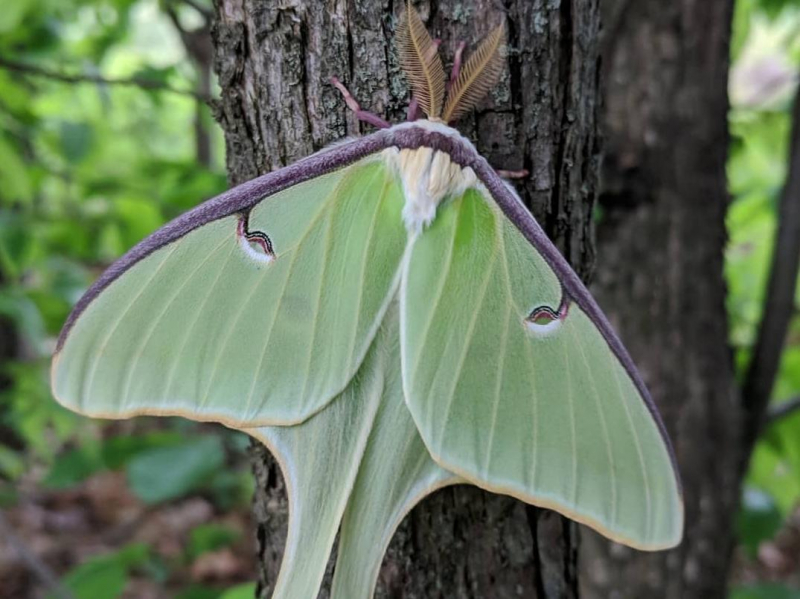
Finger Lakes Land Trust 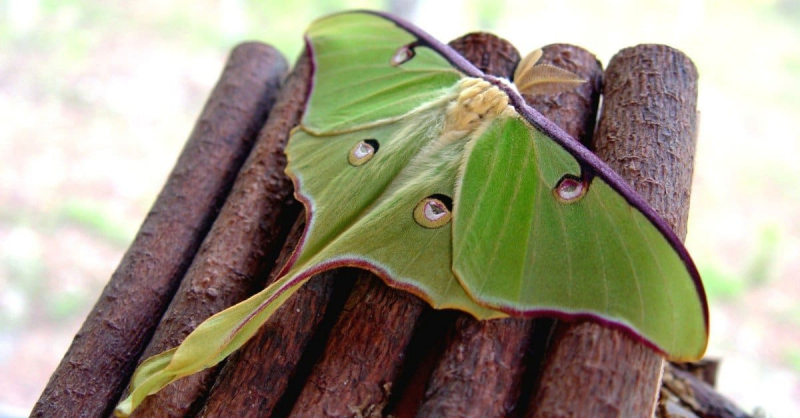
David Hampton/Shutterstock.com -
The Eastern Green Mamba (Dendroaspis angusticeps) is a highly venomous snake species of the mamba genus Dendroaspis native to the coastal regions of southern East Africa. It is a cautious and elusive animal that is rarely spotted. Its arboreal habitat and green coloration, which serves as camouflage in its natural environment, are typically credited with this elusiveness. In contrast to the active foraging behavior seen in other elapid snakes, it has also been reported to engage in ambush predation, like many vipers. In addition to mice, rats, and gerbils, it also preys on birds, eggs, bats, and rodents.
The eastern green mamba is a huge snake with a medium-to-long, tapering tail and a slightly compressed, extremely slender body. Adult males typically measure roughly 1.8 meters in length, while females are often around 2.0 meters. Rarely does this species grow longer than 2.5 meters. Typically, the entire length is 4–4.3 times longer than the tail length. The adult eastern green mamba has a pale yellow-green belly and bright green upperparts, occasionally with isolated yellow scales. Before molting, they can have duller coloring. When they are around 75 centimeters long, juveniles change from blue-green to bright green. Long and thin, the coffin-shaped head has a pronounced canthus that is barely delimited from the neck.
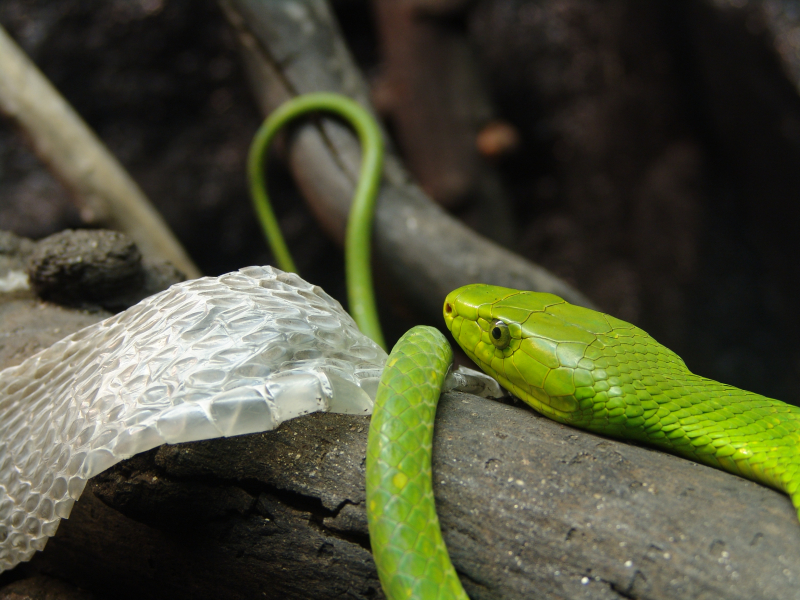
Wikipedia 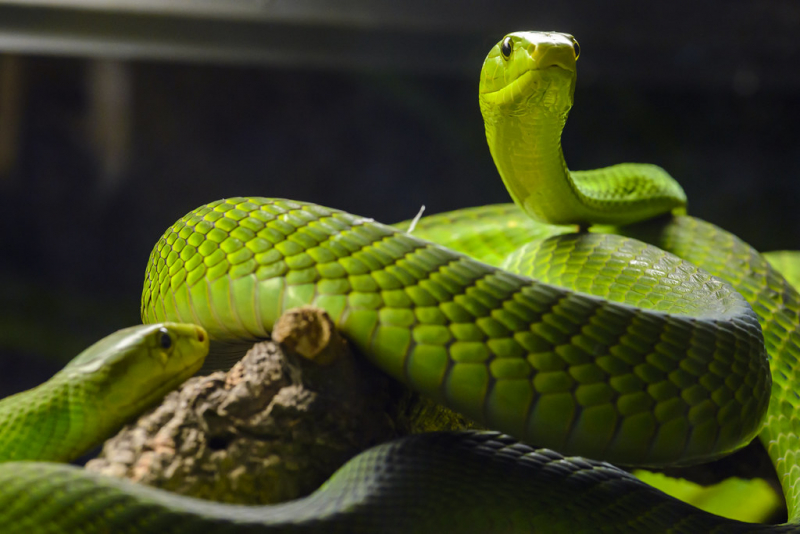
Flickr -
The genus Agapostemon (literally "stamen loving") is a common group of Western Hemisphere sweat bees, most of which are known as Metallic Green Sweat Bees for their color. They belong to the Halictidae subfamily of bees. They are drawn to human sweat, just like other sweat bees, and eat the salt found in it. Particularly the head and thorax are typically green or blue. Males often have a yellow-striped abdomen on a black or metallic backdrop, whereas females occasionally have an abdomen that is green or blue even if it may be striped. They superficially resemble a number of Augochlorini, a different group that is also frequently metallic green.
All Agapostemon species build their nests underground, occasionally in large clusters. Some species, like A. virescens, live in communities. In this and other communal species, different females construct their own portions of the nest beneath the common entry hole while sharing the same nest entrance. To create the pollen ball on which she will lay an egg, each female thus excavates her own brood chambers and gathers pollen and nectar.
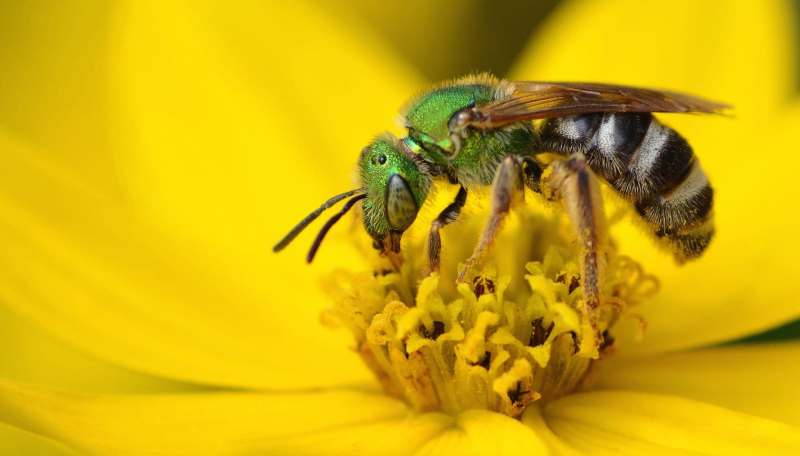
Kidadl Nature in Motion -
Chrysina gloriosa is a species of scarab whose common names are glorious beetle and Glorious Scarab. The adults are brilliant green with silver stripes on the elytra and range in length from 25 to 28 millimeters. The arrangement of chitin molecules into cholesteric liquid crystals produces these iridescent stripes on the cuticle of the elytra. The microscopic organization of each segment accounts for the variations in color, with green reflecting from cusp-like structures and silver reflecting from flat layers parallel to the elytra's surface.
The optical characteristics vary depending on the incidence angle of the propagating light, as demonstrated by Mueller matrix spectroscopic ellipsometry. The green striped polygonal cells produce self-healing Bessel beams. The adults can conceal themselves by blending in with the surroundings since they eat juniper leaves at a high elevation. The species is sometimes incorrectly thought to be endangered but has never been listed either in the IUCN Red List of Threatened Species or under the United States Endangered Species Act. An invalid synonym used to be Plusiotis gloriosa.
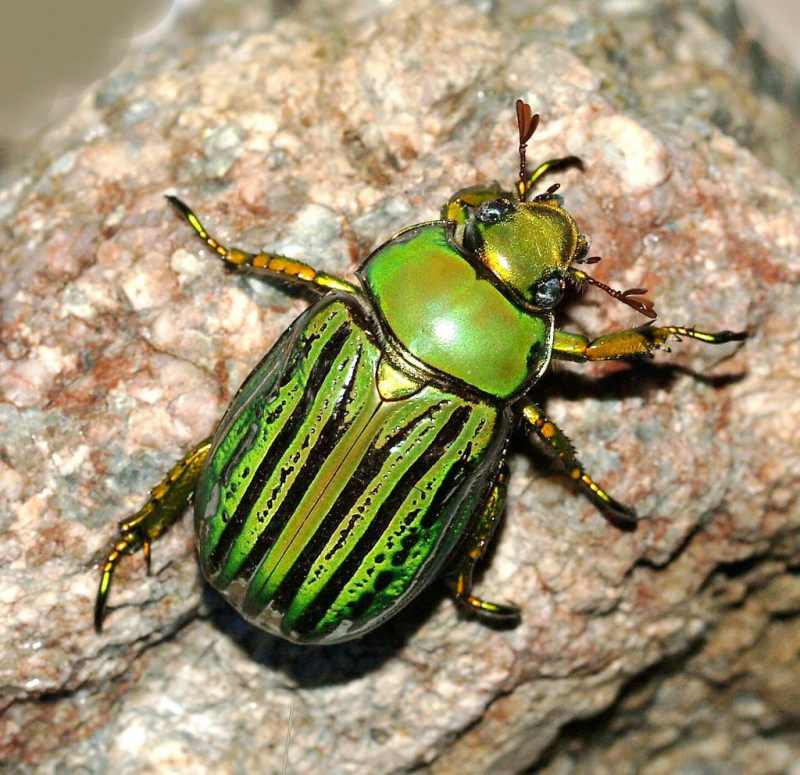
Pinterest 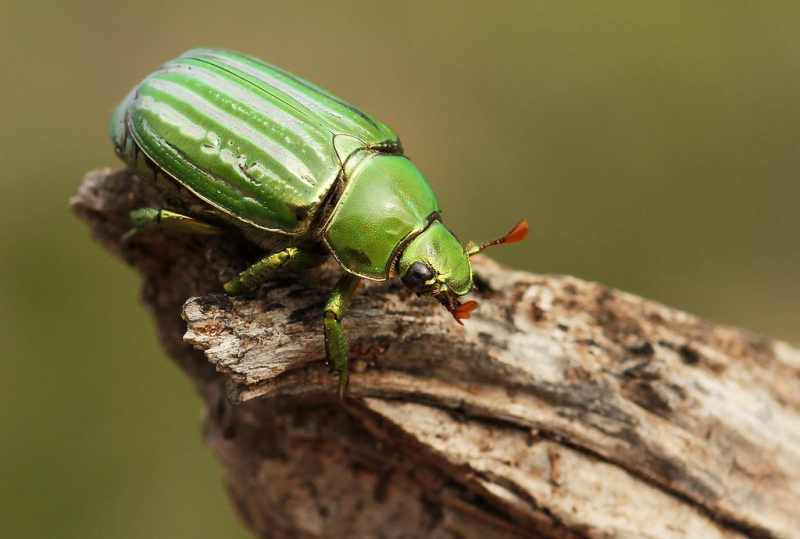
Flickr -
The Wellington Green Gecko (Naultinus punctatus) is a species of gecko found only in the southern half of the North Island of New Zealand. It was previously considered a subspecies of the Auckland green gecko and together called the common green gecko. It inhabits scrub and forested places arboreally, particularly kanuka and manuka. It enjoys sunbathing in addition to its nocturnal moth and flies hunting. It behaves aggressively, baring its open blue mouth and barking when startled.
Wellington green geckos can grow to be fairly large and are green with light green, white, or yellow dots along their backs. In contrast to common geckos and forest geckos, which have pink and orange mouths, respectively, the inside of this species' mouth is a brilliant blue color. Although green geckos are undoubtedly the most breathtakingly beautiful lizards in New Zealand, they are very infrequently seen due to their effective camouflage and diminishing populations.
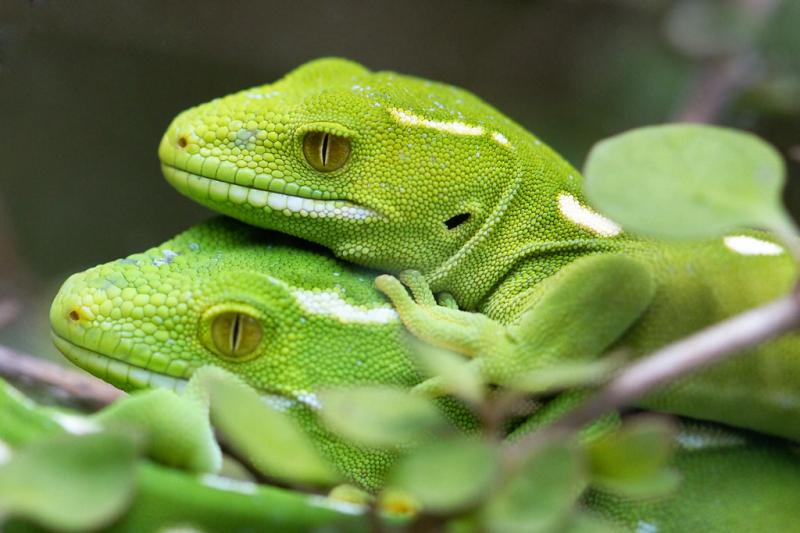
Flickr 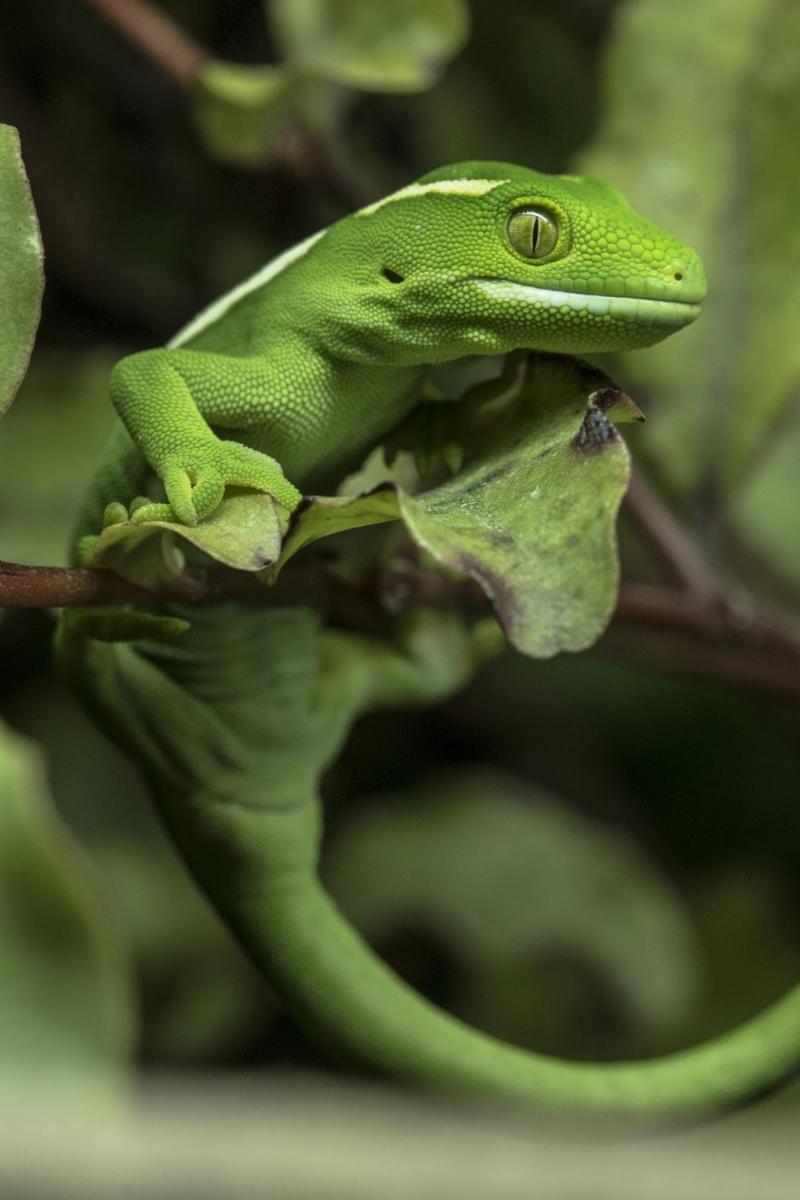
New Zealand Herpetological Society -
The Green Peafowl or Indonesian peafowl (Pavo muticus) is a peafowl species native to the tropical forests of Southeast Asia. It has been listed as endangered on the IUCN Red List since 2009 because the global population has been declining rapidly and is severely fragmented due to the loss of habitat. It is the national bird of Myanmar.
Both sexes have iridescent green feathers on their necks and breasts that resemble scales. The lesser coverts, which form a triangle of scaly feathers on the shoulder when the wing is closed, are green in the male, while the scapulars, middle, and larger wing coverts are blue. In some subspecies, the tertials are brown and/or barred with a subtle pattern, and the secondaries are black. The triangle at the wing shoulder is absent in the female because she has blue lesser coverts. Additionally, females have greater barring on the back, the primaries, and the alula, along with copper-fringed neck scales. In silhouette, both sexes are long-legged, heavy-winged, and long-tailed with shafted crests. The plumes on the female's crest are a little bit wider than those on the male's, which are thinner and taller. The skin of the face is double-striped from white to light blue and next to each ear is a crescent-shaped pattern from yellow to orange. In males, the black triangle under the eye that extends toward the brow is bluish-green, whereas, in females, it is brown.
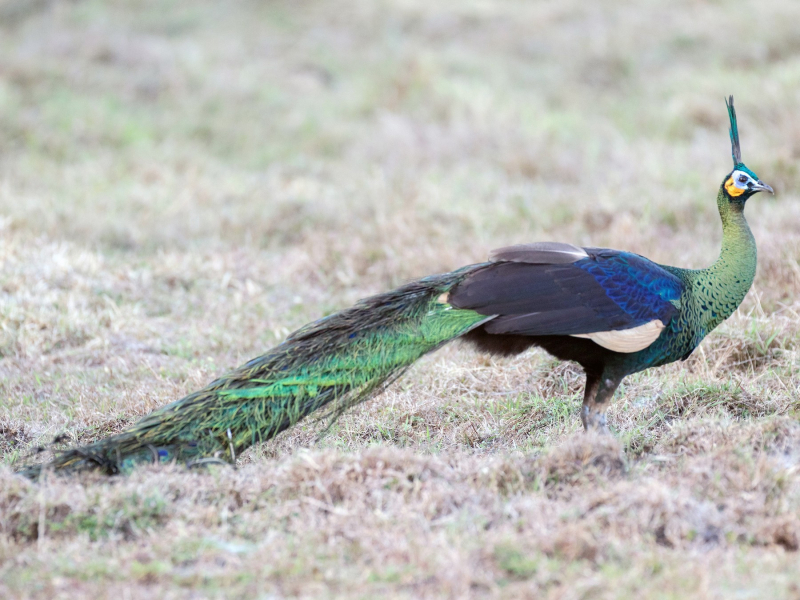
eBird 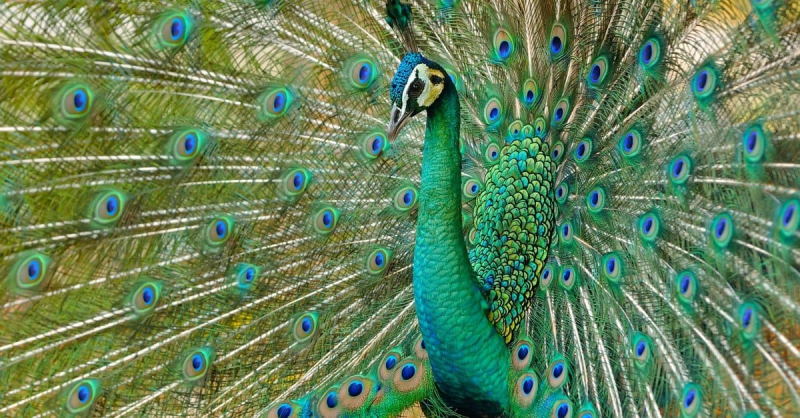
iStock -
The Green Darner or common green darner (Anax junius), after its resemblance to a darning needle, is a species of dragonfly in the family Aeshnidae. It is one of the most widespread and numerous species in North America, and it also ranges south to Panama. It is renowned for its lengthy migration route from the north of the United States south into Texas and Mexico. Additionally, it also occurs in the Caribbean, Tahiti, and Asia, from mainland China to Japan. It serves as the state insect of Washington in the United States.
The common green darner has a wingspan of up to 10 cm and a length of 6.8 to 8 cm. An unmarked green thorax is present in both sexes. The first few abdominal segments are the brightest in mature males' bluish-purple abdomens, which also contain a black dorsal stripe that gets wider toward the end of the abdomen. The majority of females and immature males have reddish-brown abdomens, however, some females have patterns similar to those of adult males. Although wings start off transparent, they typically age into amber color, especially in females. Both sexes have a black ‘bulls-eye’ mark on the face (more precisely, the frons) in front of their eyes, a distinguishing field mark that separates them from the superficially similar Comet Darner (Anax longipes).
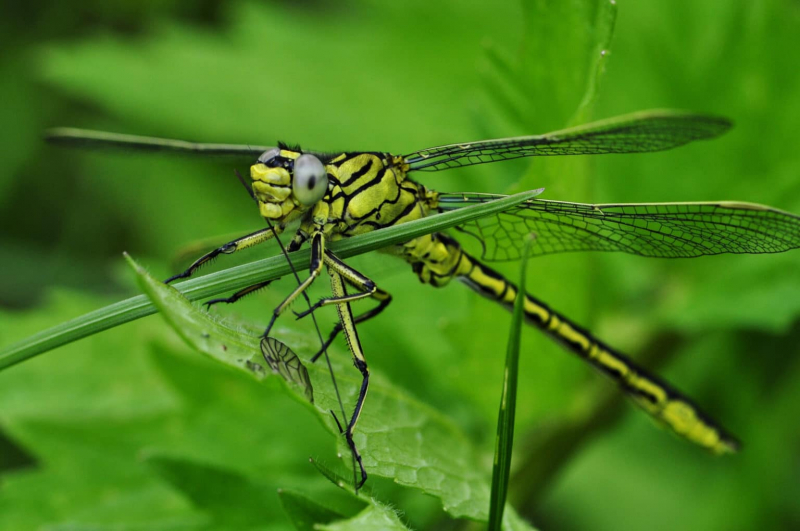
iStock 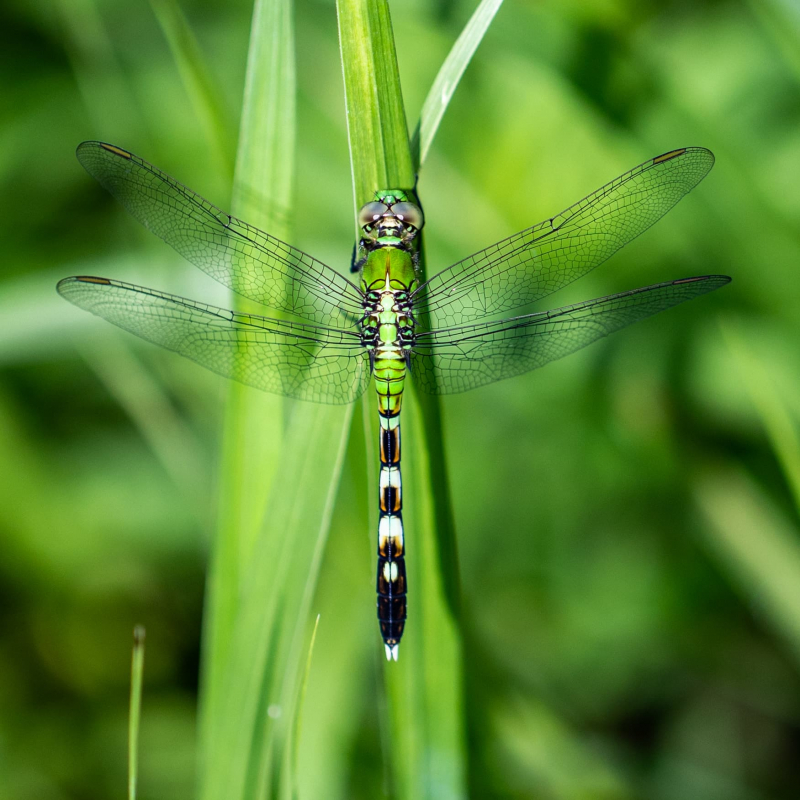
Elizabeth Barron Botanical Photography -
The Shining-Green Hummingbird (Chrysuronia goudoti) is a species of hummingbird in the family Trochilidae. It is found in Colombia and Venezuela. Its natural habitats are subtropical or tropical dry forest, subtropical or tropical dry shrubland, and heavily degraded former forest. This species was formerly placed in the genus Lepidopyga. A molecular phylogenetic study published in 2014 found that Lepidopyga was polyphyletic. In the revised classification to create monophyletic genera, the shining-green hummingbird was moved to Chrysuronia.
This hummingbird lives up to its name since it is fully sparkling green with blue accents on the crest and belly. The tail has a noticeable notch and is quite lengthy. The majority of the lower mandible has a dull reddish color, and the bill is somewhat decurved. Males have less speckled undersides than females do. They primarily consume nectar from a range of small, fragrant flowers on trees, plants, shrubs, and epiphytes that are brilliantly colorful and fragrant. They seek out and vigorously defend those regions that contain flowers with high-energy nectar. They choose blossoms with the highest sugar content, which are frequently red and tubular in appearance. They hover with their tails cocked forward, licking at the nectar up to 13 times per second, using their long, extendible, straw-like tongues to retrieve it. Sometimes, they may be seen feeding while hanging on the blossom.
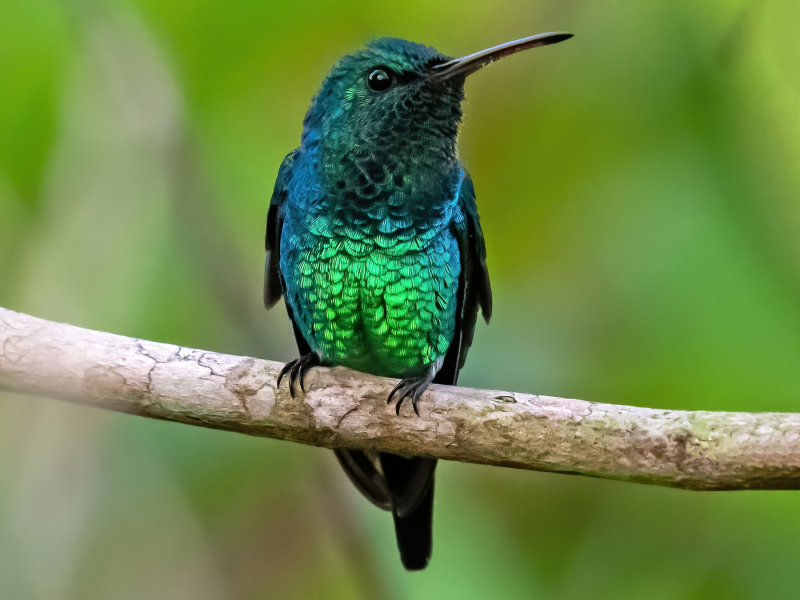
eBird 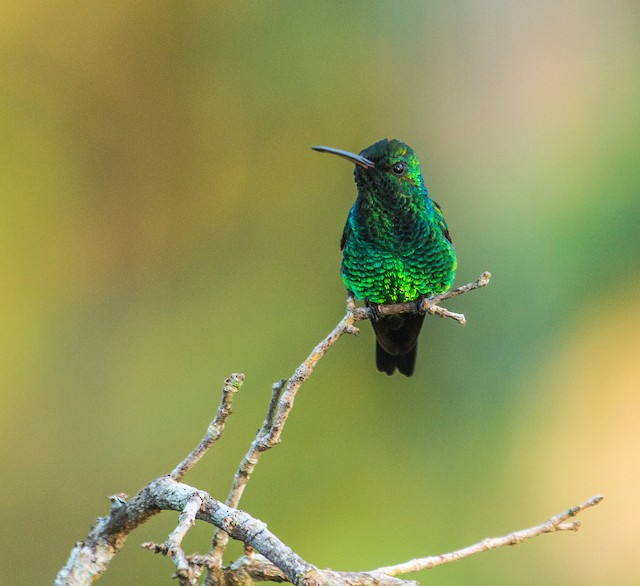
eBird












